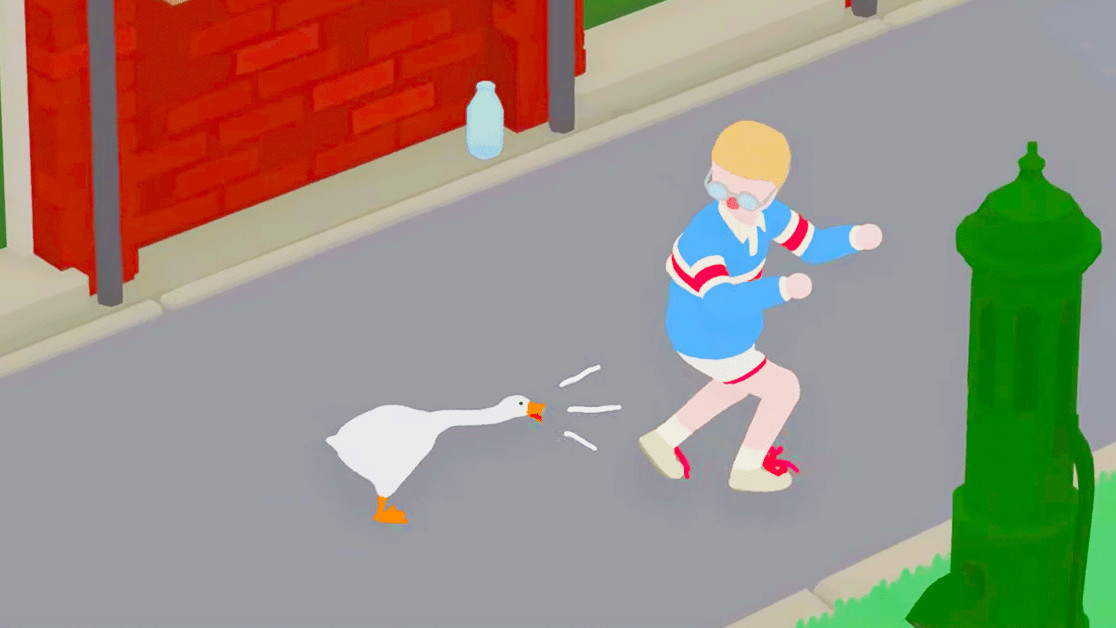
I’ve been so excited about Runner3 coming to Nintendo Switch. As a long-time fan of the Bit.Trip series (especially the Runner games), I welcome CommanderVideo to new console/portable hybrid with open arms.
As you have surely noticed, the Switch isn’t hurting for indie titles, so the Commander might be met with some stiff competition, but it’s always good for another developer with as rich a portfolio as Choice Provisions to throw their hat in the ring.
I’m really thankful to be given the opportunity of reviewing Runner3. I excitedly played through the main game and prepared my thoughts thus far, though I am still reserving final judgment. By the end of this write-up, I think you’ll agree with my reasoning.
Scope
Runner3 is ambitious. After essentially introducing the auto-running genre, then perfecting it, the team is now expanding the genre and has included branching paths, vehicles, multiple objectives, non-playable characters, and more. I never expected to have quests or interact with NPCs midlevel in a game like this.
Gameplay
Moment to moment, you know exactly what to expect from a game like this. The core “Runner” gameplay is here and as compelling as ever. You know what you are signing up for, and it’s good.
Music
It wouldn’t be a Choice Provisions game without the pounding soundtrack. I can confidently say that the music is good, though I won’t claim it surpasses the heights of the original Bit.Trip Runner.
Presentation
The creators behind Runner3 sure know how to dress up a game! From entertaining (and fake) advertisements, puppet shows, incredible narration from Charles Martinet, more puns than you can shake a stick at, and clever level names, Runner3 is dripping with personality.
Runner3 is dripping with personality.
Other Good Things
The game definitely sports some fun cameos, like playable Shovel Knight and Charles Martinet—that’s AWESOME!
Play Value
I don’t envy the developers’ task of making a follow-up to games like Runner and Runner2, which are each incredibly difficult and rewarding to master. So where should the threequel pick up as far as difficulty? How long should you spend onboarding newcomers to the series, versus serving experienced fans?
I found myself breezing through the first two worlds somewhat unremarkably. Upon reaching world 3, I felt a noticeable difference where the challenge seemed to hit a sweetspot and the level design felt more inspired. World 3 was really cool… but it was the last world.
Roughly half the levels in Runner3 are “Retro” stages, which you aren’t told how to unlock… but the loading screens start giving you hints about what to do IN them from the start of the game. I found this frustrating, and I’m still trying to locate the VHS which will get me into Retro world 1. I tried reaching out to other reviewers, but they were unable to help. Perhaps I could have pinged the developers, but I felt the need to form my own opinions about how this game does (or doesn’t) guide you through the discovery process.
Crunching a few numbers, you find that the game overall has fewer levels than Runner2, and only a couple more levels than the original Runner.
Replay Value
But just beating the game once from point A to point B doesn’t put a cap on your time with Runner3. Not even close. The replay value in this title is nothing if not dense. I saw credits roll but came nowhere close to conquering the game’s available challenges.
There are lots of attainable achievements for completionists (especially the “not-actually impossible” impossible levels).
Which are pretty much impossible.
… The game stops counting your deaths after 99, by the way.
#NoShame
User Experience
The degree to which you have completed a level isn’t always clear. I can think of many things that MIGHT increase your “grade,” but they would be guesses:
There is gold to collect as well as gems, checkpoints that could be skipped instead of used, collectible items, a score counter that can be boosted by setting off optional rockets along the way, and a bullseye target at the end. It’s not communicated which of these feats correspond to which color of ring on the level select, or color of + icon, or position of said colored + icon. You can go into Stats and it literally records your amount of Perfect, Perfect+, Special, Special+, Special Perfect, Special Perfect+ and “Special Perfect Double+” levels without telling you what the differences are or how to achieve them, so I’m a bit fuzzy on what it takes to 100% this game. I know it’s cute to have those ambiguous ranks, but I felt lost.
Hiccups and Hang-Ups
I wanted to love every moment of this game, but I feel that it is my duty to report back honestly about some snags I experienced along the way.
– There are so many long loading screens in this game. If you want to back out from the level select to the menu, you’re going to sit through a lot of these back-to-back.
– Sometimes you can’t switch tracks, and other times they seem to switch for you. Sometimes you die because one track is lower than the other (but you’re supposed to be able to switch at any time).
– Accomplishments aren’t very celebrated. Levels end with some calm, anticlimactic elevator music (even if you had an outstanding run or defeated a boss). After an intense feat and narrowly winning, it feels like a crescendo is in order rather than things fading out with a wet fizzle.
– CommanderVideo is missing some of his moves from previous titles, like holding forward to reflect beats with a shield—that was an awesome mechanic! There is also no loop-de-loops or dancing. [Update: Dancing IS included in this game! Immediately after stumbling upon this action with a shoulder button, I was given a loading screen that informed me about the mechanic.]
– The art style is definitely unique, but can be disappointing in places—like looseness in certain animations, background elements being big and weird but not always nice to look at graphically, etc. I feel like a measure of precision was sacrificed when moving this series from sprite graphics to 3D. This is the kind of game where precision is paramount (yes, their proclivity for alliterations is rubbing off on me).
Value Proposition
This game is more expensive (at $30 digital, $40 physical) than any of the others in the series. Runner 2 is available right now on Wii U for $3. Buy that.
But don’t write off Runner3 for charging more, either. You know it costs a lot of benjamins to get such an acclaimed voice actor to lend his talent. And if you’re willing to grit your teeth, crack your knuckles and rise to the “post-game” challenges, you’re going to have a nice, long stay in this wonderfully wacky world.
And after knocking out those impossible levels and completing your collection of Super Duper Triple Plus Perfects (or whatever), you’ll have plenty of in-game currency to spend on capes, clothes, and other goodies. There are no in-app purchases to be found, which is reassuring in this day and age.
There are no in-app purchases to be found!
In Summary
I had a great time with Runner3. My wife even enjoyed watching me play, and loved the music. (How many games can you say that about in your house?)
But there were undeniably several niggling aspects of the game’s design that kept me out of the flow, whether they were apparent glitches, omissions from past games, or a general sense of not knowing how to do more than advance through the basic levels.
I would have loved to publish a full review on embargo day, but I have yet to access any of the Retro levels.
I think it would be negligent to offer a score on this game after playing only half the content.
You might struggle a lot less than me once Runner3 is available for purchase, with help from a printed manual or online guide. I think those would have come in handy during my play-through (and still will as I continue to explore).
One more note:
Gaming’s landscape has changed a lot since CommanderVideo first graced consoles. On Nintendo Switch, Runner3 is faced with competitors like the incredibly tight and exciting musical levels in Rayman Legends, or the superbly atmospheric rhythym-horror title Thumper. $30 is a tough sell when Runner3 struggles to stack up to the impressive accomplishments of its earlier installments. But if you’re a fan of the series, and/or someone who 100%s their games no matter how difficult, you could hardly go wrong here.
I will definitely report back once I have a better understanding of the game’s full offering. I’d also like to extend a huge thanks to Choice Provisions, and Dant over there, for giving us the hook-ups. I hope this early look at Runner3 helps inform your buying decisions ahead of launch day, May 22nd! And set a reminder for our live steam!




